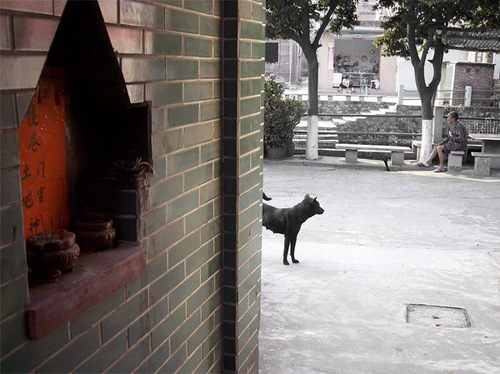on Chinese addresses and what a township is
MaryAnn O’Donnell continues her clear-eyed thinking about the land and people of Shenzhen and Guangdong province, at her blog Shenzhen Fieldnotes.
If you want to know how Chinese addresses work and how to parse China’s various administrative naming practices–if you want to know more about the kinds of places that drive the southern China manufacturing miracle–read her post “emplacements,” on Julong Village, otherwise known as “guangdong province, dongguan city, wangniudun township, julong village (广东省东莞市望牛顿镇聚龙村)”. MaryAnn writes:
…much of the guangdong boom is actually located in rural townships and
villages. administratively, townships are hybrids; they are rural
cities. this means that in niuwangdun, julong villagers can invest in
industrial production (because it is a city), but that the landuse
rights return to villagers, both collectively and individually, because
they hold eternal land rights. this loophole has provided guangdong
townships and villages with the incentive and flexibility to
industrialize in different ways from cities. on the one hand, it has
also enabled villagers to become wealthy independent of the state. in
shenzhen, this loophole inspired the rural urbanization movement, which
changed the administrative status of shenzhen’s farmers from rural to
urban, with the result that their children no longer have traditional
rights to the land. on the other hand, it has produced a distinctive
landscape of tiled multi-story housing, factories, and traditional
remnants.”

Yes, MaryAnn’s blog is something special: it is both palpably personal and rigorously academic. Together, these qualities express the depth of her commitment to her environment. Rather than attempt to present a purely academic analysis, she invites readers to share in her interests. As a reader, I might not be predisposed to care about a particular topic that she chooses to discuss in some detail. By including herself in her analyses, she helps the reader recognize the personal effects of one’s environment and its changes, on many different levels.
In the film Drowning by Numbers by Peter Greenaway, there is a child who likes to do things like count all the hairs on a dog, or leaves on a tree. What is the purpose of this kind of knowledge? What difference does it make?
MaryAnn’s blog is precisely about how changes make a difference. Although it can be rather detailed, it is never merely a collection of details; rather, it attempts a clearsighted description of effects and their context – for herself, for the many residents of Shenzhen, for the reader. I personally feel very lucky she is in this city. She has helped me understand it better, on more than one occasion.
PRC, Guangdong, Shenzhen